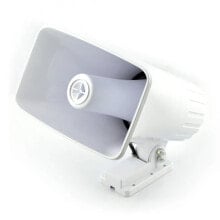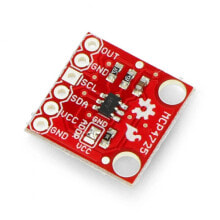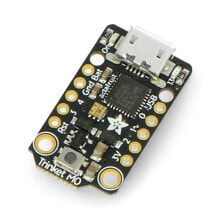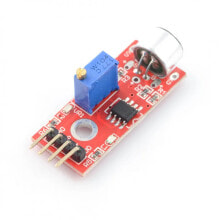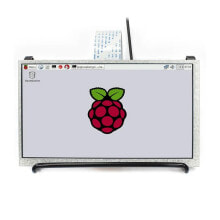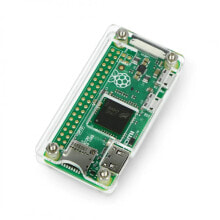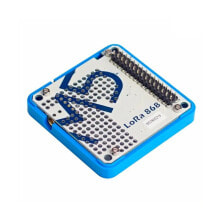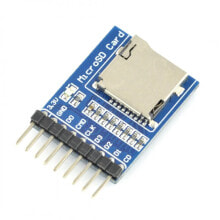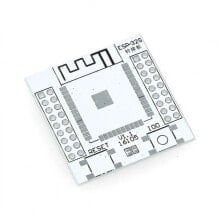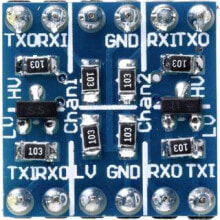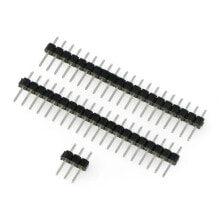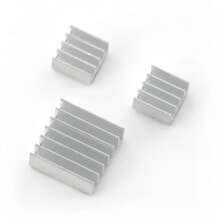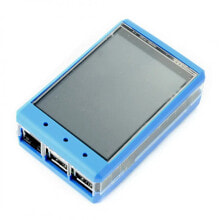Properties
- UC - I2C
- yes
- UC - RAM
- 2 kB
- UC - A/C
- 10-bit
- UC - PWM
- 6
- UC - USB
- miniUSB
- UC - UART
- yes
- UC - ядро
- 8-bit AVR, 1. Single Core
- UC - EEPROM
- 1 kB
- Voltage From
- 20.0 V
- UC - Вспышка
- 32 kB
- UC - аналог в
- 8
- UC - frequency
- 16 MHz
- UC - SPI Interface
- yes
- UC - microcontroller
- ATmega328
- Выходное напряжение до
- 5.0 V
- Выходное напряжение от
- 3.3 V
- UC - Цифровые контакты
- 22
Features
- Product Type
- Запчасть для микрокомпьютера
General characteristics
- Voltage To
- 6.0 V
Other features
- Brand
- Arduino
Power
- Nominal output voltage
- 5.0 V
Description
The Arduino Nano is a popularversion of Unoin a smaller size: 45 x 18 mm. The board contains an ATmega328 microcontroller equipped with 22 digital input/outputs, 6 of which can be used as PWM outputs (e.g. for motor control), and 8 as analog inputs. The system works with the clock signal with the frequency of 16 MHz and has 32 KB Flash memory and 2 KB RAM SRAM.
This version features small size: 45 x 18 mm. Has soldered male connectors on the bottom side of the tile.
Key features
Below are a few features that distinguish modules Arduino from the other programmable tiles.
Name Description
Installed
bootloader
Thanks to bootloader, only appropiate mini-usb cableandsoftware from manufacturer's website are necessary to program the device.Small
size
This version features small size: 45 x 18 mm. Has soldered male connectors on the bottom side of the tile.Digital I/O
22 digital inputs/outputsallow, in particular, to control the LEDs, relays and reading the buttons' states.Efficiency of
current
The maximum current efficiency for a single output is 40 mA.Output
PWM
6 PWM outputs allow e.g. to control motors and brightness of the LEDs.Analog inputs
8 inputs of built-in digital-analog converter with 10-bit resolution, support, in particular, sensors with analog output.Serial communication
The device supports popular communication interfaces, including UART, I2C and SPI, and USB.Built-in memory
Atmega328 system with a clock signal with a frequency of 16 MHz, has 32 KB Flash memory, 1 KB EEPROM and 2 KB of RAM SRAM.Supply
pin VIN To power the Arduino, you can useany power sourcewith voltage from 6 V to 20 V, which is to be connected to pins VIN (+) and GND.Supply
USB port
The tile can be powered from the computer via thecable miniUSB, bearing in mind that the maximum power load for the USB port is 500 mA. Arduino has a system that protects the socket from short-circuit and the flow of too high current.Connector
ICSP
The module has ICSP I/O for connecting an externalAVR programmer.Built-in
led
The connected led on pin 13 allows debugging simple programs.Output
3.3 V
Built-in voltage regulator provides power to external devices with the voltage of 3.3 V with current consumption of 50 mA.
First run
To help you get started with the module, we have prepareda tutorial that will help you with the installation and first run of the Arduino environment.
Specification
- Supply voltage:
- Maximum parameters: 6 V to 20 V (with low current and cooling system)
- Recommended: 7 V to 12 V
- Microcontroller: ATmega328
- Maximum clock frequency: 16 MHz
- SRAM: 2 KB
- Flash memory: 32 KB (2 KB are reserved for the bootloader)
- EEPROM: 1 KB
- Pins I/O: 22
- PWM channels: 6
- Number of analog inputs: 8(channels of converter A/C with 10 bit resolution)
- The mini-usb port for programming
- Serial interfaces: UART, SPI, I2C
- External interruptions
- Dimensions: 45 x 18 mm
Useful links
- The manufacturer's website
- User manual
- Arduino Forum
- The installation and first start
- Software of Arduino IDE
- Diagram of the module
- Program files of Eagle
- Documentation for the ATmega328









